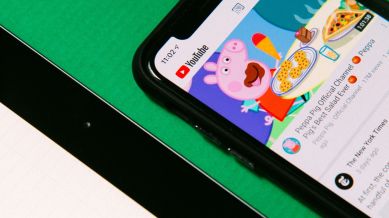Did Google use YouTube videos to train its new AI video model, Veo?
Last week, YouTube announced it will be integrating the Veo model with Shorts for users to create six-second AI-generated clips.

Google’s new Veo model for generating AI videos was trained on “some YouTube content,” the tech giant said.
“There are a variety of AI models used and these models are trained on publicly available content and data from the internet as well as some YouTube content,” Johanna Voolich, the chief product officer at YouTube, said during a press briefing held on Tuesday, September 24.
“We’ve used content on YouTube for many years to make YouTube better for viewers and creators,” Voolich added.
Last week, YouTube announced that it will be integrating Veo with its Shorts feature for users to create and upload six-second AI-generated clips. They will also be able to use Veo on YouTube to add AI-generated video backgrounds through the existing Dream Screen feature. YouTube is looking to roll out these AI features by next year.
Tech companies have been criticised for not clearly stating what data has been used to train their AI models. Earlier this year, OpenAI CTO Mira Murati drew flak for refusing to clarify if its text-to-video generator Sora had been trained on YouTube content.
Concerns over AI-generated YouTube Shorts
Addressing concerns that AI-powered YouTube Shorts could be potentially misused to create deepfakes, Voolich said, “We remove harmful content, we also leverage our recommendation systems and monetisation tools to promote a healthy ecosystem. With AI, we continue to use the same techniques.”
“We’ve also updated our privacy complaint process to allow individuals to request the removal of altered or synthetic content from YouTube when it realistically depicts them,” she further said.
YouTube has said that these AI-generated Shorts will be embedded with an invisible watermark based on Google’s SynthID technology. They will also be labelled as having been generated using AI tools. Though, users will only be able to see these AI labels if they tap to expand the video description.
It is also unclear if users will be able to opt-out of watching AI-generated YouTube Shorts. While YouTube is exploring longer-duration AI-generated Shorts, Johanna Voolich explained that there’s a reason for the current six-second length.
“There is an elicit trade-off between the quality of the videos we can create and the time limit. If we allowed a 20 second video, it would be more complicated to get it really good. So, we think for creators, grouping six-second videos one after another will allow them to create a better experience for users,” the top executive said.
Other features coming to YouTube
YouTube will soon roll out a new feature to let users “hype” the videos posted by content creators with a tap. The Hype option will appear below the existing Like button of a video. With more “hypes”, a creator’s video will move up a leaderboard of the top 100 hyped videos. Users can only hype a YouTube video three times per week. The feature will only appear for videos posted by creators who have less than 5,00,000 subscribers.
When asked about the 5,00,000 cut-off, Voolich told indianexpress.com, “We picked the subscriber threshold because we wanted to have ‘Hype’ help smaller creators. So, the idea is to have their fans help them become successful. A lot of it is inspired from what we’ve seen with superfans in APAC.”
On how the new Hype button will affect YouTube’s recommendation algorithm, she said, “Hype will not be initially focused on changing the main algorithm but putting creators on a leaderboard to show who’s been hyped more.” Each country is expected to have its own leaderboard of ‘hyped’ creators.
Though Voolich said there was no data on how Indian YouTubers are adopting AI features, she stressed that “globally our intention is to lower the barrier for creators with these features.”